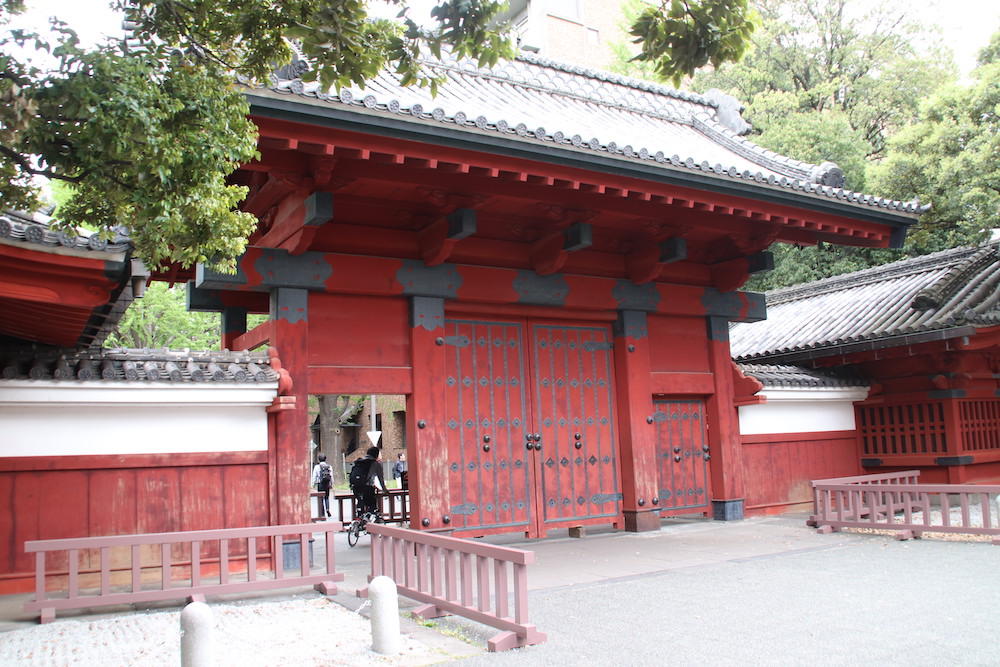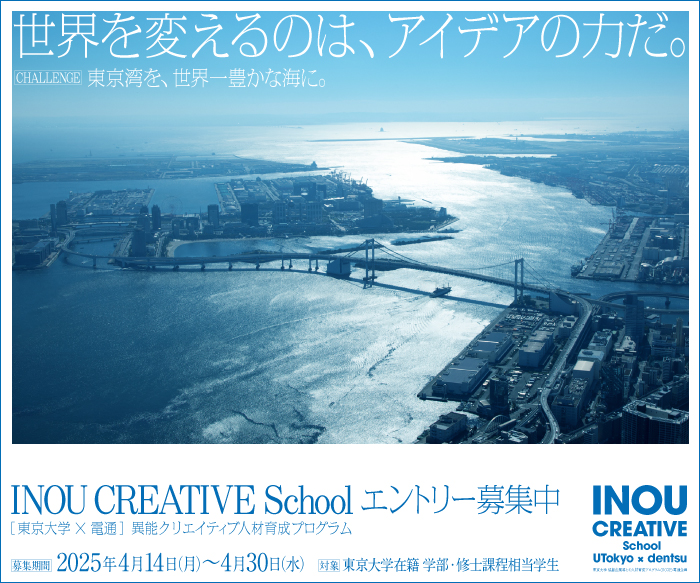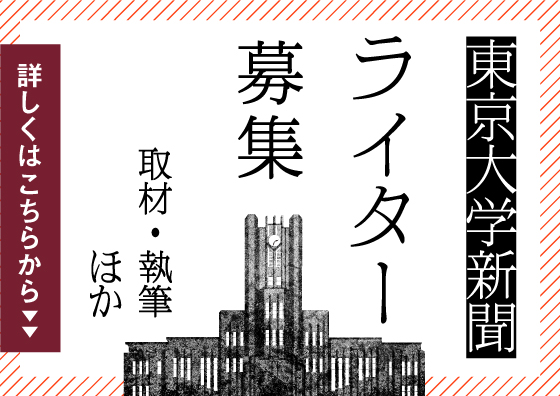We, without doubt, lay ourselves in “places,” which, if we heed the specialty of things therein or the history therewith, appear to us as having a variety of meanings. In this serial article, we aim to contemplate various “places” found in Todai’s campuses with the cultural geographer Dr. James Thurgill, who interprets “places” by employing a knowledge of the humanities that spans philosophy, history, anthropology, and so on. Our first meeting is at Akamon in Hongo Campus. (Interviewed, Written and Translated by Mon Madomitsu)

“Why are there beings at all instead of nothing?” This is a question posed by the philosopher Martin Heidegger, who regarded what we do not see as “absence”. Dr. Thurgill pays attention to “spatial absence” at the entrance of Akamon as an interesting point to consider the space around the famous gate. Unlike other gates in the Todai campus, Akamon is roofed and is surrounded by a thick wall (see below). As such, when we stand in front of Akamon and look into the Todai campus, we cannot see the world beyond, which is veiled by the gate’s frame and wall, and so it appears to be absent to us. The action of going through the gate, however, allows the world beyond to unfold before us, and thus absence turns to presence.
“Absence is recognized through presence, and vice versa,” says Dr. Thurgill. In other words, by grasping the space that is veiled by Akamon and which thus appears “absent,” we come to understand that the landscape of the Todai campus, as it is perceived through the gate, is but a part of the whole. Such an understanding of “spatial absence” invites us to see what is still unseeable, to imagine what lies beyond the gate.
Dr. Thurgill points out that the Akamon embraces such a paradox, inviting people to enter while simultaneously regulating their movement and vision. Cultural geographer Tim Cresswell has suggested that a disturbance to people’s mobility, such as traffic congestion or airport departure gates, is a type of “friction”. According to Dr. Thurgill, the Akamon also produces friction by regulating the movement of people who pass through it.

Akamon has one large door and two small doors (see above),and according to the door that is open, people’s view ofand movement inthe space will differ. It is only through the gate─the framework─that people can view the landscape beyond and move towards it. Heidegger used the word “Gestell”─framework─to explain that the way of being is prescribed by environment. The structure of Akamon is indeed Gestell, which regulates and prescribes the movement of people’s physicality.
In addition, Dr. Thurgill, employs the concept of “liminality”, proposed by the anthropologist Turner. This concept points to a transgressive change, and Turner regarded places such as shrines or churches, where people enter and experience a transformation that makes them move away from their daily life, as “liminal places”. Dr. Thurgill, however, thinks that the university is also a liminal place, for people there retreat from the mundane world and engage in academic life. Akamon indeed functions as a boundary line between two such places.
◇
Between two different regions, there exists some sort of a wall, if not a physical one then one that is imagined. In order to get access to another region, we need a gate. Nevertheless, we should be careful when following the path through it. By composing “spatial absence”, the gate certainly has a function that invites people into it, yet through nothing but the composed “absence” it engenders, it produces friction on people’s movement.
In today’s globalizing society, it is not difficult to think of a “different culture” as an example of a “wall” which is close to us. Such a wall may be physical, as President Trump proposes, or imagined, existing only in one’s mind.
Generally speaking, placing not a wall but a gate between different cultures is the first step toward interaction. If we take “cross-cultural exchange” too flippantly, however, might we not end up spreading the belief that those we interact with are no more than people who entertain us by providing us with an extraordinary “liminal place”? Or might we not end up producing friction among those who are about to move through the gate and consequently emphasizing the wall more than what is beyond it? In case of the interaction among different individuals, what should we suppose beyond the framework of wall and gate? Such questions are worth contemplating while enjoying the view of Akamon.
【関連記事】









